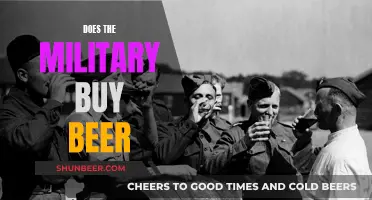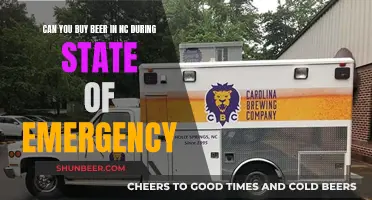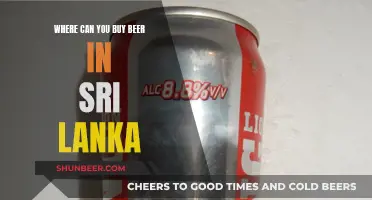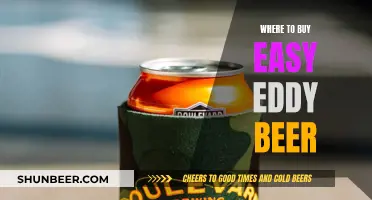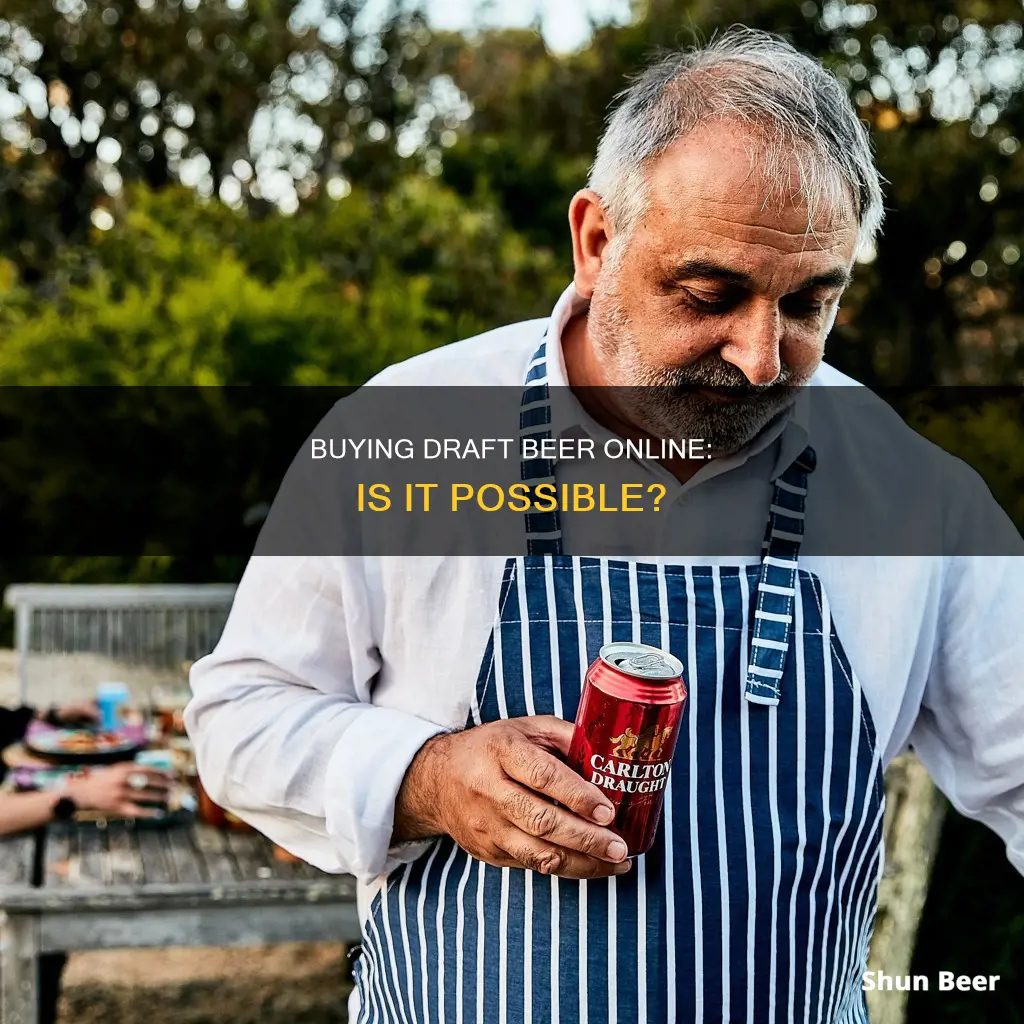
The decline in draft beer sales is a decades-long story, with COVID-19's temporary closure of bars and restaurants accelerating the pace of losses. In 2023, Can Algul, co-founder and CEO of Pubinno, a company that uses AI and robotics to improve the draft beer experience, said that the company's commitment to standardizing the draft beer industry had been recognized, with Pubinno handling 37% of all draft beer operations in Istanbul, the biggest city in Europe.
In 2024, only 9% of beer sold in the US was packaged in kegs, with the rest sipped from bottles or cans. Data company Draftline Technologies estimates that between 7 and 13% of all draft lines are empty, and if trends continue, draft beer could become a novelty or a relic.
However, there are still some places where draft beer is available for purchase online or delivery, such as The Open Bottle in Illinois, which offers fresh draft beer in 32oz crowlers and 8oz mini-growlers for pickup or delivery within a 10-mile radius. There is also the option of purchasing an at-home draft beer dispenser, such as the PerfectDraft Machine, which offers bar-quality draft beer at home.
What You'll Learn

Draft beer at home: countertop keg machines
If you're looking to enjoy a perfectly poured pint without leaving the house, then a countertop keg machine is the answer. These compact devices, such as the PerfectDraft Machine, bring the bar experience into your home, allowing you to pour bar-quality draft beer without ever stepping out your door.
The PerfectDraft Machine, with its sleek and compact design, fits effortlessly on most countertops, measuring just 11.5 inches in length, 20.3 inches in depth, and 17.5 inches in height. Its small footprint ensures it can be easily accommodated in your home, and with a 30-day money-back guarantee, you can rest assured that it won't be a cumbersome addition.
The machine is incredibly easy to use. Simply insert a 202-ounce keg (equivalent to 18 bottles of beer, depending on the brand) into the unit, and you're ready to go. The PerfectDraft offers customizable temperature control, allowing you to chill your beer to your desired temperature, ensuring the perfect pour every time. With a temperature range of 32°F to 54°F, you can be sure that your beer is always served at its optimal chill.
Each keg serves more than 12 pints, making it ideal for hosting parties or simply enjoying a cold beer at home. And with PerfectDraft's innovative technology, your beer stays fresh for up to 30 days after tapping, guaranteeing a perfect pint every time. There's no maintenance required, and with quick 30-second keg swaps, you can enjoy non-stop refreshment without the hassle.
The PerfectDraft Machine is more than just a beer dispenser; it's an experience. With its precise cooling and easy-to-use design, it delivers the perfect pour, ensuring you can savour the taste of bar-quality draft beer in the comfort of your living room. So, if you're a beer enthusiast seeking convenience, freshness, and the ultimate at-home drinking experience, the PerfectDraft Machine is the ideal countertop keg solution for you.
Beer Buying on Independence Day: What's the Deal?
You may want to see also

The future of draft beer: AI and robotics
The future of draft beer is here with AI and robotics revolutionizing the way we consume our favourite beverage. Pubinno, a San Francisco-based company, is at the forefront of this revolution, with its "Internet of Beer" concept. With operations spanning 60 cities across three continents, Pubinno is transforming the draft beer experience through technology, standardization, and sustainability.
Standardization and Data
Pubinno's Smart Tap, Smart Hub, and Smart Clean technologies work together to create a fully connected digital ecosystem. The Smart Tap, powered by AI and robotics, controls the flow rate of beer and tracks various parameters such as pressure, line cleaning, temperature, and keg freshness. This ensures beer quality and delivers the perfect pint, regardless of time and location. The Smart Hub provides real-time data and insights to brewers and pub owners, helping them optimize their operations and make data-driven decisions.
Reducing Waste and Sustainability
Pubinno's technologies also address the significant waste in the draft beer industry, with an average loss per keg of 23%. By improving keg efficiency and reducing overpouring and overflow, Pubinno has helped save over 652 million litres of water. Additionally, their Smart Clean technology ensures proper and regular line cleaning, improving beer quality and consumer health.
Enhancing the Consumer Experience
The Internet of Beer not only benefits brewers and pub owners but also enhances the consumer experience. With Pubinno's technologies, consumers can enjoy a perfectly poured pint, served at the ideal temperature, with minimal wait times. This is especially beneficial in high-volume venues like stadiums, where long lines and warm, poorly poured beer are common issues.
Embracing Change
While tradition has been the biggest rival to the adoption of new technologies in the beer industry, the COVID-19 pandemic accelerated the need for digital and robotic solutions. With pubs and restaurants facing unprecedented challenges, Pubinno's innovations helped streamline operations, improve efficiency, and enhance the art of bartending.
The future of draft beer is bright, with AI and robotics playing a pivotal role in ensuring sustainability, enhancing the consumer experience, and revolutionizing the traditional beverage industry.
Buying Beer in Mitchell County, Texas: Is It Possible?
You may want to see also

The decline of draft beer: why fewer people are drinking it
A shift in social habits
The COVID-19 pandemic and subsequent closure of bars and restaurants accelerated a long-term decline in draft beer sales. For Gen Zers who turned 21 during the pandemic, staying home became the default social mode. This shift in social habits, combined with Americans' increasing preference for socialising at home, has resulted in fewer people drinking draft beer.
A multisensory experience
Draft beer is a multisensory experience, with different glassware enhancing the beer's aromas and visual appeal. The particular gas used to force beer out of the keg can create a silkier or crisper texture, and the way the bartender pours the beer can change the density and creaminess of its head. However, with fewer people going to bars, there are fewer opportunities to experience this.
The rise of canned beer
The rise in popularity of canned beer is another factor contributing to the decline of draft beer. Canned beer is single-serve and self-contained, making it a convenient option for those who prefer to socialise at home. Additionally, most lagers are still poured at 38 degrees Fahrenheit, which is harder to achieve at home.
The role of the bartender
The skill and expertise of the bartender play a crucial role in the quality of a draft beer. The pressure in the beer lines, the cleanliness of the glassware, and the technique used to pour the beer all impact the taste and quality. With fewer people going to bars, there are fewer opportunities to experience a perfectly poured pint.
The social aspect of draft beer
Draft beer is inherently a social experience. It is often served in bars, pubs, taverns, and other places where group memories are made. The act of gathering with friends and enjoying a freshly poured pint is an important part of the draft beer experience. With more people choosing to socialise at home, this social aspect of draft beer is being lost.
St. Patrick's Day Special: Buying Green Beer
You may want to see also

The multisensory experience: why draft beer tastes better
The science behind the taste
It's long been debated within the craft beer community whether draft beer is superior to bottled or canned beer. While some people believe that draft beer is better because it's served straight from the tap, others argue that the taste depends on various factors, such as the treatment of the beer during transportation and storage, and the cleanliness of the draft lines.
The role of freshness
One of the key factors that influence the taste of beer is freshness. Heat and light can degrade the flavours and aromas of beer, and this can happen during transportation and storage if the beer is not kept cold and protected from light. Kegs offer better protection from light compared to clear and green glass bottles, which are more susceptible to "skunking". However, this is not an issue with canned beer, as aluminium cans are lightproof.
The impact of carbonation and texture
Draft beer also offers the advantage of real-time carbonation control, which affects the texture and mouthfeel of the pour. With draft systems, temperature and pressure can be customised, and constant pressure is applied to the liquid, resulting in a different carbonation level compared to bottled or canned beer.
The influence of the drinking environment
Apart from the scientific factors, the drinking environment and personal experiences can also influence the taste of beer. Drinking beer on tap in a bar or brewery with friends can create a positive multisensory experience, enhancing the taste of the beer. On the other hand, drinking a canned or bottled beer at home in a familiar environment may result in a different perception of the flavours and aromas.
The convenience of draft beer at home
While traditionally, draft beer has been associated with drinking at bars or breweries, innovations like the PerfectDraft Machine now allow people to enjoy draft beer at home. This countertop keg machine offers bar-quality draft beer, customisable temperature settings, and easy keg swaps, bringing the multisensory experience of draft beer to the comfort of people's homes.
Best Beer Buying Spots in New Jersey
You may want to see also

The history of draft beer: how it's changed over time
The history of draft beer goes back centuries and is thought to be one of the oldest alcoholic drinks in the world. Beer drinking was taking place across the ancient world, from China to Germany.
The word 'draft' (or 'draught') comes from the word 'dragan', meaning to carry or pull, relating to how the casks of beer were transported. It is likely that ancient civilisations stored and transported beer in barrels, and there is a tale of medieval monks in Europe brewing beer in this way.
The earliest record of draft beer in America dates back to the 1600s when English settlers began brewing beer in the colonies. The first brewery in colonised America was established in 'New Amsterdam' (now Manhattan) by Adrian Block and Hans Christiansen. However, it was not common to brew beer commercially at the time, and most people brewed their own at home. As settlers moved across the country, more breweries opened, and it became more popular to go out for a drink.
During the Industrial Revolution, waves of immigrants from Europe brought their beer-brewing techniques with them to the US, and beer rose in popularity. However, as people started working in factories, bottled beer became more popular in the 19th century. Beer, particularly lager, was popular throughout the 1800s, especially in areas with newly arrived immigrants from Central and Eastern Europe. The development of pasteurisation allowed beer to be shipped across longer distances.
In the 1930s, the invention of the beer keg revolutionised the industry, allowing for easier storage and transportation of beer. This helped increase the popularity of draft beer. However, the production and sale of alcohol, including beer, were outlawed during Prohibition (1920-1933). After Prohibition was repealed, social drinking once again became widespread, but bottled and canned beer rose in popularity in the 1950s and 1960s.
It wasn't until the 1980s, with the craft beer movement, that draft beer saw a resurgence. Technological advances made it easier for bars and restaurants to set up draft line systems, and hundreds of new microbreweries emerged. Today, draft beer is still popular and is available in a variety of styles and flavours. It is often seen as superior to bottled or canned beer because it is fresher, has a fuller flavour, and has a smoother, creamier texture.
Work Truck Beer Run: Legal or Not?
You may want to see also


